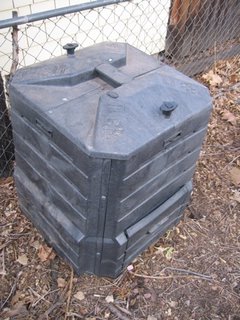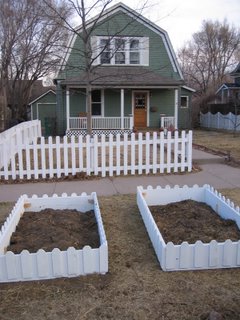Getting a head-start on spring
Chip, a reader and gardener from Black Forest (where spring doesn't come until June, sometimes) gets a headstart on peppers, tomatoes, and other warm weather vegetables, by growing them inside.
Here are some of his pictures and tips:

My seeds were planted about 20 days ago and are beginning to emerge. Planted two pepper varieties and five tomato. Seeds were treated by hot-water bath (50 deg C), planted in sterilized medium, and coated with fungicide powder (Captan) to avoid seedling diseases.
In the meantime, I've covered my garden with clear 4 mil plastic to force early thaw and higher soil temps. When uncovered, the garden was frozen solid last week to a depth of about 10 inches. It's now uniformly 40 degrees F down as far as the temp probe will reach. When it hits 50 Deg consistently, I'll plant the cold crops (spinach, beets, peas, etc.) under the plastic 'til they sprout and get a nice early start to the year. Have also purchased composting components to be ready for spring grass composting.
Bottom line, this should not be dead time, it's very busy!
Here are some of his pictures and tips:

My seeds were planted about 20 days ago and are beginning to emerge. Planted two pepper varieties and five tomato. Seeds were treated by hot-water bath (50 deg C), planted in sterilized medium, and coated with fungicide powder (Captan) to avoid seedling diseases.
In the meantime, I've covered my garden with clear 4 mil plastic to force early thaw and higher soil temps. When uncovered, the garden was frozen solid last week to a depth of about 10 inches. It's now uniformly 40 degrees F down as far as the temp probe will reach. When it hits 50 Deg consistently, I'll plant the cold crops (spinach, beets, peas, etc.) under the plastic 'til they sprout and get a nice early start to the year. Have also purchased composting components to be ready for spring grass composting.
Bottom line, this should not be dead time, it's very busy!





